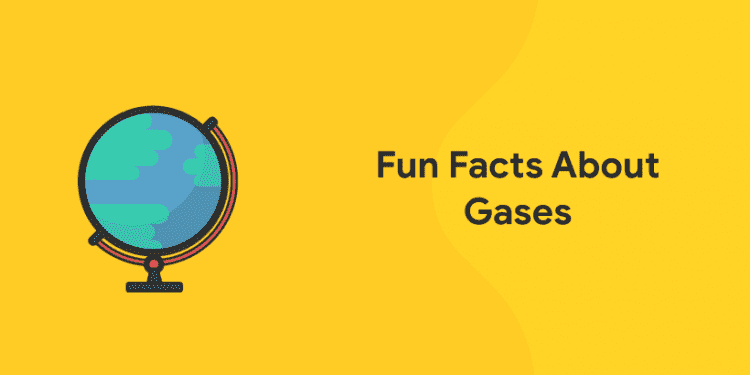In Physics and Chemistry, the matter is any material/ substance that has some mass and takes up space by having some volume. Based on the pressure, temperature and volume the matter exists in the universe in various forms, and we called that the Phase or the state of the matter. A state is a form of matter that has relatively uniform physical properties, and chemical composition. The different states of matter are solids, liquids, gases, plasma’s, super-fluids, super solids, Bose-Einstein condensates, etc. Among them, the first three (solids, liquids, gases) are more familiar to the masses. Here we are concentrating on the Gases, through some fun facts about gases and their properties.
Fun Facts About Gases
The universe is made up of matters, and these matters are made up of atoms which are in turn made up of electrons, protons, and neutrons. These atoms came together to form molecules, which are the building units for all types of matter. As of now, scientists have found four natural states of matter Solids, liquids, gases and plasma, and various man-made states like Bose-Einstein condensates. Among them, the Gases are which have weaker inter molecular bonds than the other two natural states. They do have large space between them and have high kinetic energy with no definite shape or volume. Let’s read about some of the fun gas facts.
What are Gases?
Gas is one of the natural states of matter with no definite shape or volume. Since it’s difficult to identify them by the naked eyes, they are often described using their characteristics like pressure, volume, number of particles, temperature, etc. Since the Gas molecules have weak bonds (or no bonds), they can vibrate, and move quickly and freely and can fit the shape of the vessel/ or its holder and fill the same.
What are the different types of gases?
The Gas is around all of us, from the one we breathe to the cooking gas in our kitchen we are surrounded by them in one form or another. Gases can be categorized based on the:
- number of atoms needed to make them
- natural or artificial
A pure gas may be made up of only one atom (e.g. a noble gas or atomic gas like neon), while Elemental gases, like hydrogen, are made of two or more of the same atom. The gases, like carbon monoxide, are a combination of different types of atoms and are called Compound gasses. The group VIII elements in the modern periodic table exist as mono atomic, i.e, the one in which the atoms are not bound to each other at the standard temperature and pressure. These gasses are called noble gases, and the examples are helium (He), neon (Ne), argon (Ar), krypton (Kr), xenon (Xe) and radon (Rn).
The Elemental Gas is a group of stable homo nuclear molecules (a molecule that is composed of atoms from only one chemical element) at STP. The elemental gasses are hydrogen (H2), nitrogen (N2) and oxygen (O2), plus the two halogens, fluorine (F2) and chlorine (Cl2). The standard temperature and pressure (STP) are defined as 0 degrees Celsius and 1 atmosphere of pressure.
Gases can also be classified based on their formations as natural or man made/ artificial. Natural gas or fossil gas is a naturally existing hydrocarbon gas mixture with methane as the main component. They are widely used across various purposes like Cooking, power generation, industrial uses, etc.
Download Entri! Attempt our free SSC Mock Tests!
Interesting Facts about Gas
While reading about the gas, it’s common to come up with the term Vapor and some of you may have misunderstood them with the gas itself. Gas and vapours are different with some similar features. Any gas at a temperature below its critical temperature can be called vapour. The critical temperature is the maximum temperature at which a gas can be liquefied by pressure. While the Vapours experience a phase change, i.e., from liquid to vapour form or from solid to vapour form, the gases don’t have this transition. Another difference is regarding the natural state, the natural state of vapour is not gaseous, but can be solid or liquid while that of the gas is the gaseous form itself.
Some of the gases and their uses which are repeatedly asked in various competitive exams are:
- Gas used in LPG (Liquid Petroleum Gas): Butane, and Propane
- Tear Gas is also known as a lachrymator agent or lachrymator or “mace”: o-chlorobenzylidene malononitrile
- Laughing gas: Nitrous Oxide
- Marsh Gas: Methane
Attempt free General Knowledge Mock Tests! Download Entri!
Start your State PSC, SSC, UPSC and RRB preparations with Entri’s. You can now access Current Affairs PDFs, quizzes and mock tests for all competitive exams with ENTRI. Our experts will help you with tailored timetables, personal mentorships, mock tests, exam updates, video courses, and live sessions to ace your next recruitment test.













